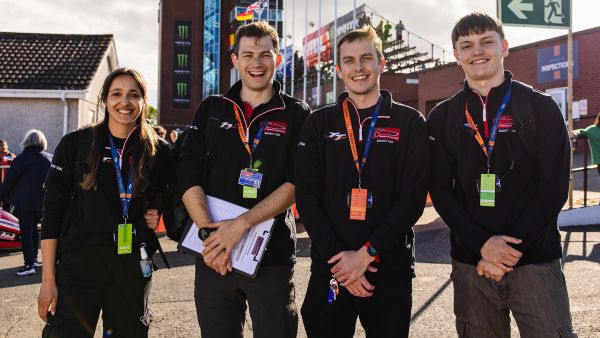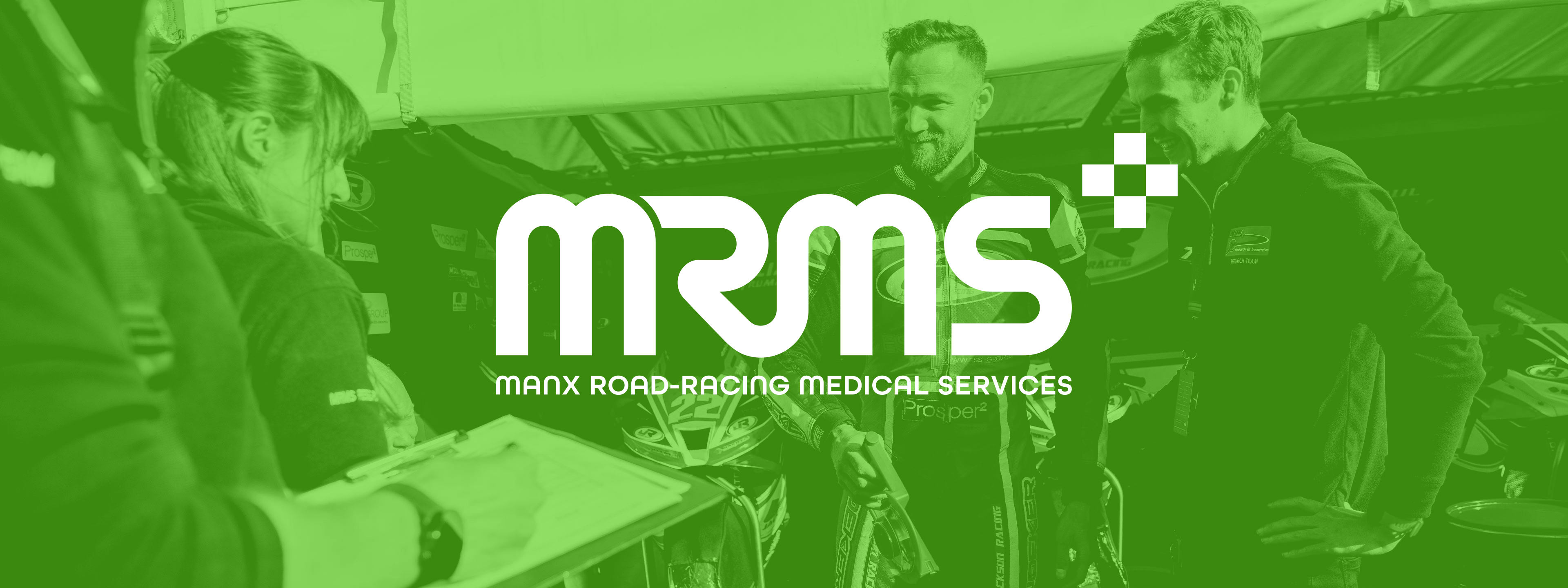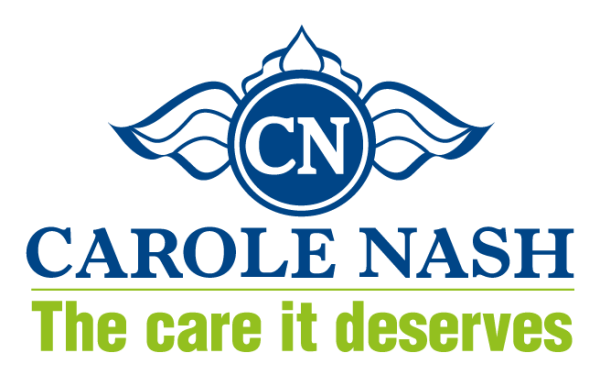HEARTBEATS AND HORSEPOWER - NEW RIDER PERFORMANCE RESEARCH
The Isle of Man TT has always pushed the boundaries of human endurance. While races like the Senior TT may be far shorter in duration than they once were, today’s event is arguably even more demanding for those competing in one of the world’s oldest, and most dangerous, motorsport arenas.
There are the things we all see: speed, skill, razor-sharp reflexes, and physical stamina. But then there are the things we don’t – especially how stress and fatigue impact decision-making, focus, and visualisation during competition. What if we could measure that?
Evolution at the TT is often viewed through the lens of record-breaking feats and ever-decreasing lap times – driven by advances in machinery, and matched by an ever-higher level of rider talent. But a quieter revolution is underway. It unfolds in the paddock, in the shadow of the TT Grandstand, focused on the crucial moments before and after a race, when the heart is pounding and adrenaline still courses through the body.
Following a successful pilot in 2024, Manx Road-Racing Medical Services (MRMS) returns this year with an expanded study – one that’s asking big questions about what it truly takes to ride the TT. And for the first time, it’s looking for answers in numbers.

Manx Road-Racing Medical Services (MRMS) returns this year with an expanded study.
UNDERSTANDING THE TT RIDER
There has always been a certain mythology surrounding the TT and the riders who take on the Mountain Course. Competitors are brave, unshakable – almost superhuman. But beneath the visor and the cutting-edge suit is a mind and body working overtime: managing adrenaline, battling fatigue, and making split-second decisions at speeds approaching 200mph – all while navigating the longest and most unforgiving stretch of tarmac in motorcycle racing.
“No other sport asks this much of its athletes,” says Dr Jonathan Davies, lead researcher on the study. “But until now, we’ve only known that instinctively. We’re now collecting the data to prove it, and, more importantly, to do something meaningful with it.”
Working with volunteer riders during TT 2025, the MRMS team will gather physiological and cognitive data across select race sessions. Heart rate, core temperature, grip strength, blood lactate, weight loss and reaction time will all be recorded before and after riders take on the gruelling 37.73 miles of the Mountain Course.

Heart rate, core temperature, grip strength, blood lactate, weight loss and reaction time will all be recorded before and after.
“This project is about more than data,” adds Dr Gareth Davies, Chief Medical Officer for the TT. “It’s about understanding the rider as a whole. Because if we want to protect them, we first have to understand what their body is going through.”
Everyone knows the performance profile of the machine – the gearing, tyre pressures, fuel strategy and suspension settings fine-tuned to every bump and braking zone on the Mountain Course. But what about the rider? “We map every inch of the track for the bike,” says Davies, “but we’ve never done the same for the human being piloting it. That’s what we’re starting to change.”
RIDER'S REALITY - SHAUN ANDERSON
The appeal of the project was immediate for Shaun Anderson, a seasoned competitor at the TT and one of the first riders to take part in the study.
“When I was told they’d be doing a medical study, it was something I was immediately interested in,” he says. “The physicality of the TT is always shrouded in some sort of mystery. We’ve got varying athletic builds throughout the grid, each with their own method of performance preparation. But, as riders we currently lack the understanding of how that aligns with performance out on the road and this research gives us the opportunity to dig deeper.”
For Shaun, the value of the study wasn’t just in the data, but in the context it provided, a rare opportunity to benchmark key indicators and make informed choices about preparation. From hydration levels to heart rate patterns, the insight offered a new layer of understanding in a world where feel and instinct have always reigned supreme.

For Shaun, the value of the study wasn’t just in the data, but in the context it provided.
“We measured weight before and after sessions, which gave a quick reference to hydration. That’s something that can get overlooked in the chaos of a TT day - you’re always chasing problems or prepping the bike, and a few hours can pass before you realise you haven’t taken on any fluids.”
Grip strength and blood lactate offered further insight. “I’ve never had issues with armpump, and my numbers came back quite high… but my data guy reckons I brake pretty softly, more like a traditional road racer. So for me, grip strength isn’t linked to braking performance. That alone was useful to know.”
Heart rate was another key marker for Shaun, and a surprising one. “Compared to a friend of mine with a much more athletic build, my heart rate was way lower. Maybe that’s just my riding style? Spectators have often said I look like I’m just off to get the paper. But it shows that riding fast at the TT isn’t always about aggression. You have to be relaxed.”
Even the reaction test, the one Shaun admits was the toughest, had its place. “It was a pad with traffic lights going out. Easy to get distracted. But it was a reminder that the TT focuses you like nothing else. Out there on the Mountain Course, distraction isn’t just costly - it’s dangerous.”
As for what’s next? Shaun’s already looking forward to participating in year two.
“I’m interested to see what improvements I’ve made - whether the changes in my training and preparation are shown in the numbers. Anything that gives me that kind of insight, I’m all in.”
A SPORT FIRST APPROACH
The TT’s strategy has always been clear: preserve the purity of the racing while relentlessly raising the bar. This study is part of that vision, sitting alongside advances in race operations, rider development, and safety management.
Everything about the study is therefore designed to respect the rhythm of the event. Testing is non-invasive, sessions are pre-agreed, and riders can opt out at any time. This is science in the service of safety – not science getting in the way of sport.
“We are here to support and empower the riders,” says Jonathan Davies. “Not to interfere or limit them. Together, we’ll build a stronger, safer future for everyone who races here.”
That empowerment is underlined by the fact that riders will receive access to their individual results post-event, turning insight into a unique tool for preparation, performance, and recovery.

The riders will receive access to their individual results post-event, turning insight into a unique tool for preparation, performance, and recovery.
It’s a small step on paper, but one that could make a world of difference.












